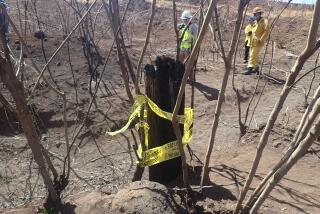Workers Need Access to Utility Poles
- Share via
Thanks for your insights on hiding utility poles (“In the Garden,” May 24). I find your columns practical and generally enjoyable reading.
As I am a full-time technician for a local telephone company, the subject was amusing. Part of the fulfillment of our job comes from working in people’s yards and among their trees and gardens.
Proper placement and maintenance of trees near utility poles can mean the difference between enjoyable surroundings or annoying, dangerous obstacles.
The poles are not, unfortunately, put in place to set and forget. They are implements of our jobs, and we need to ascend them daily. We must be able to see the steps. Even more critical are the poles without steps, for these require the use of foot-hooks and intimate contact with the wood all the way up and down.
We often find trees growing nearby, even into the utility easement (the 5-foot space allowed for working around the pole). Of course, some trees planted 20 feet away will, with time, spread limbs in all directions. This is normal and may mean pruning.
The problem trees are those so close to the pole that they block the climbing space. Such situations usually result in the following:
We do minor pruning on the spot, which may or may not please the owner; or we stop the job until the owner can arrange proper pruning, telling the neighbor his telephone service cannot be installed or repaired until then.
In extreme cases, the utility company may invoke its easement rights and have the tree removed. This can get ugly, literally and figuratively.
Thanks for mentioning that vines growing on a pole do get in our way and will usually be torn down. Hopefully your readers who plan ahead will be able to enhance our ugly poles while still leaving work space. In such arrangements, utility workers will hardly need to come in contact with the trees, leaving all pruning decisions to the owner.
GREG GOLDEN
Van Nuys






